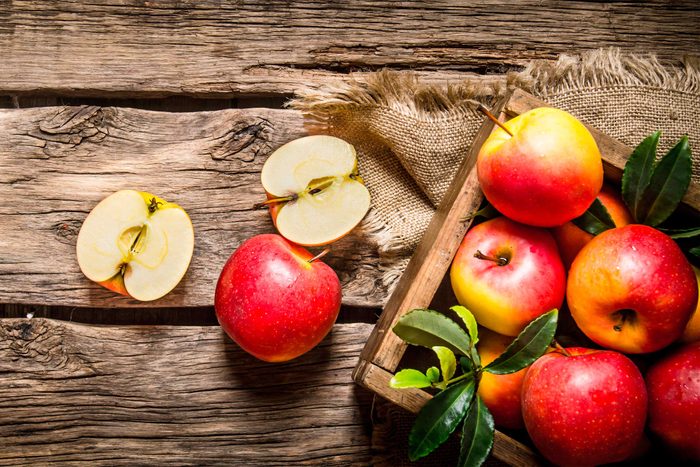
Apples
An apple a day may keep asthma away. Apples are packed with phenolic acids and flavonoids that are known for reducing inflammation in the air passageways, a common feature of both asthma and wheezing. (Here are more of the best and worst foods for asthma.) “Asthma has increased in prevalence,” says Alan Mensch, MD, senior vice president of medical affairs and medical director at Plainview Hospital and assistant professor at the Donald and Barbara Zucker School of Medicine at Hofstra/Northwell in Plainview, NY. “Some people speculate it’s because our diets have gone from a healthy diet to a less healthy diet over the past couple of decades.” Don’t miss these other everyday items that can cause lung problems.
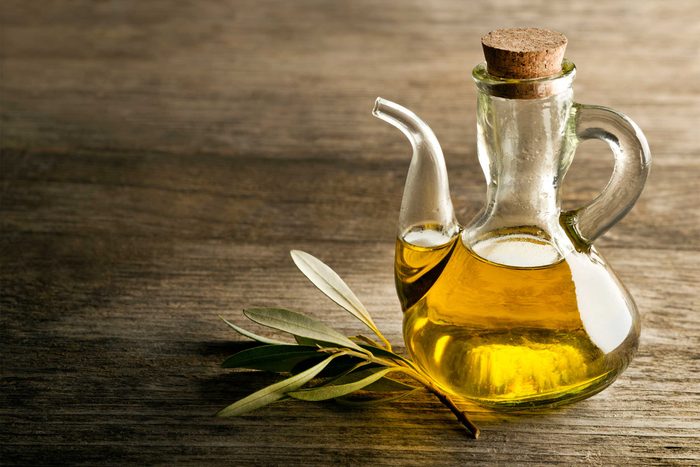
Olive oil
The mono and polyunsaturated fats and phytonutrients found in olive oil are great for more than just your skin, hair, and heart; they also play a role in lung health. In fact, olive oil may help fight the health risks associated with air pollution like increased blood pressure and impaired blood vessels—factors that can reduce your oxygen supply, make your heart pump faster and make breathing more difficult. An Environmental Protection Agency study administered fish oil, olive oil, and no oil to three groups of adults; after one month, participants breathed in filtered air and polluted air for several hours. The olive oil trumped all by boosting the blood vessel’s response to pollutant stress and increased levels of tPA, a blood protein that dissolves clots, which can give you shortness of breath. Scientists believe the oleic acid, an anti-inflammatory component found in olive oil, may be responsible.The findings appear in Environmental Health Perspectives. “Olive oil is a healthy oil that serves an antioxidant function, says Norman H. Edelman, MD. senior scientific advisor for the American Lung Association. “It helps fight the primary effects of pollutants, which is inflammation and the bad molecules that come from inflammation, which are the oxidants.”

Coffee
That cup of Joe does more than give your brain a jolt—it could also alleviate asthma symptoms. “Caffeine is a mild bronchodilator; however, it doesn’t compare to an inhaler,” says Dr. Mensch. Even if your morning coffee does improve your breathing, the effects aren’t long lasting, which means it’s safest to always have your inhaler in tow. (Make sure you know how to use an inhaler the right way, too.)
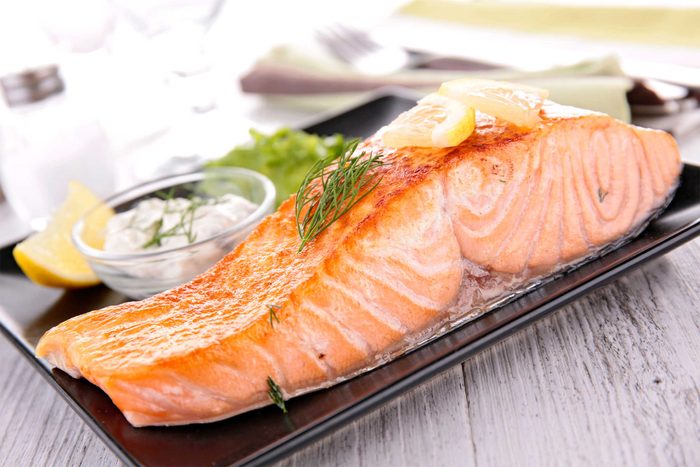
Salmon
The omega-3 fatty acids found in fish like salmon helps reduce inflammation in the lungs and may also fight bacteria. “Inflammation is the big bad wolf in biology now,” says Dr. Edelman. (Here’s what you should know about buying farm-raised vs. wild-caught salmon.)
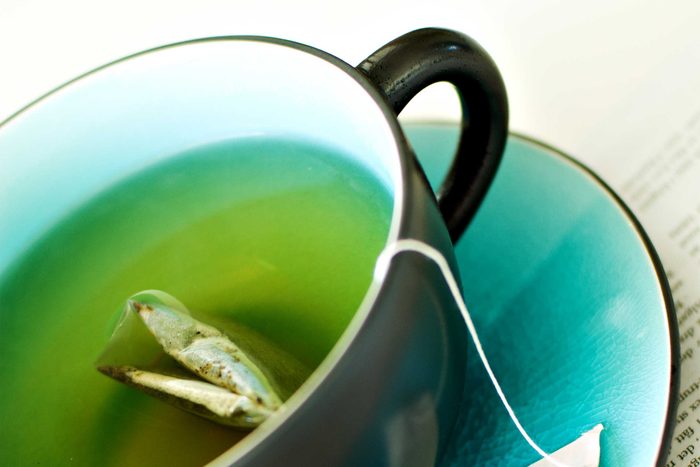
Green tea
A hot mug of green tea is loaded with antioxidants that calm the body, decrease inflammation, and promote better healing. But the star of the bunch is quercetin, an antioxidant that acts as a natural antihistamine. This means it slows the release of histamine and other inflammatory chemicals in the body that can cause allergy symptoms. The hot water is also great for soothing your throat and protects your lungs from irritation by flushing out mucous membranes. “It’s important to stay well hydrated to keep mucous secretions thin and flowing and to help keep airways clear,” says Stephanie Schiff, RDN, a dietitian at Huntington Hospital in Huntington, New York. Here are some other ways that green tea pays off for your health.
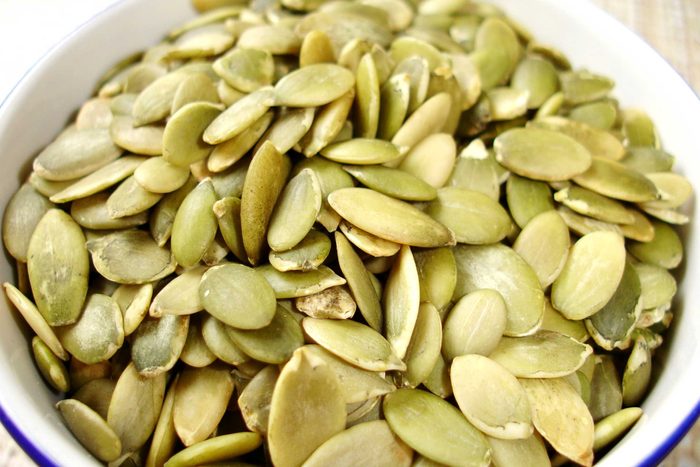
Seeds
Seeds are a tiny but mighty tool in achieving optimal lung health. Pumpkin seeds, sunflower seeds, and flaxseed provide your body with a bountiful helping of magnesium, a critical mineral for people with asthma, says Boston-based nutritionist Dana Greene, RD. Magnesium helps the muscles in your airways relax and reduces inflammation, so you can breathe nice and easy. (These are signs you could be deficient in magnesium.) Grab a handful to snack on, mix them up in your smoothie, or sprinkle them on your salad to enjoy seeds’ nutritious benefits. Just don’t start taking this vitamin that could raise your risk of lung cancer. Learn more about silent signs of lung disease.
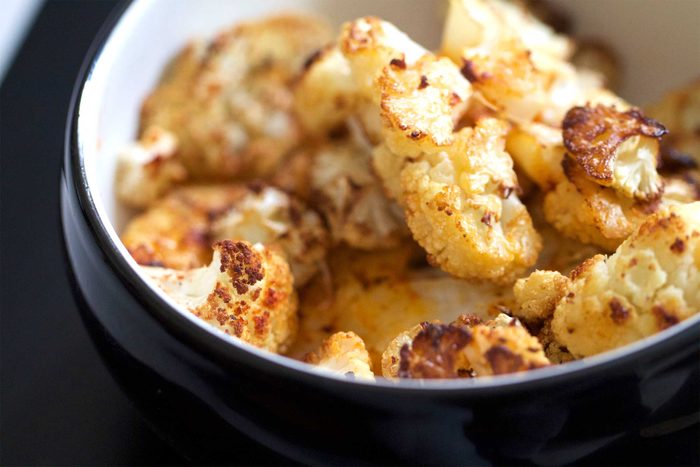
Cruciferous vegetables
Sturdy veggies like broccoli, Brussels sprouts, kale, and cauliflower may help reduce your risk of lung cancer. More research needs to be done to bolster the connection, but one large study in the Journal of the National Cancer Institute suggests women who ate more than five servings of fruits and vegetables, including cruciferous vegetables, weekly had a lower risk of developing lung cancer. (Here are more habits to prevent lung cancer.) This family of veggies is plentiful in glucosinolates, natural compounds that have been found to inhibit the development of some types of cancer in animals and some humans, including lung cancer, by deactivating cancer cells and decreasing inflammation. Watch out for these easy-to-ignore lung cancer symptoms.
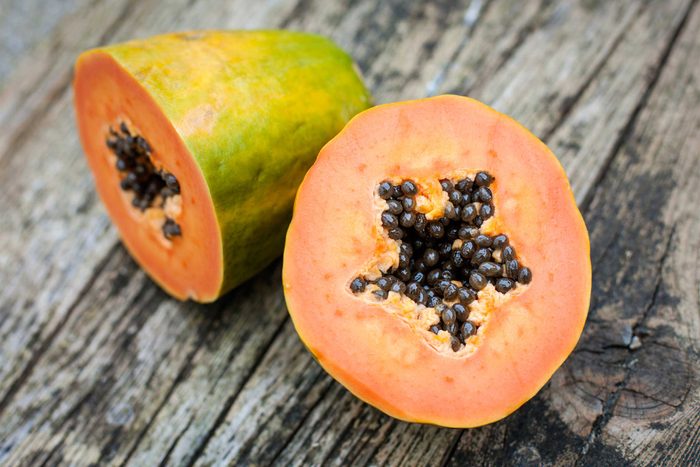
Orange fruits and veggies
Orange fruits and vegetables like pumpkins, oranges, and papayas are full of lung-friendly antioxidants, most notably vitamin C. Vitamin C is well known for fighting infections and inflammation, and a review of studies published in Allergy, Asthma & Clinical Immunology suggested that it may play a role in reducing the frequency of exercise-induced asthma symptoms by as much as 52 percent. “But aim for a variety of fruits and vegetables,” says Schiff. “Dietitians often say, ‘Eat the rainbow,’ to get a good sampling of antioxidants.” Don’t miss these clear signs of exercise-induced asthma.
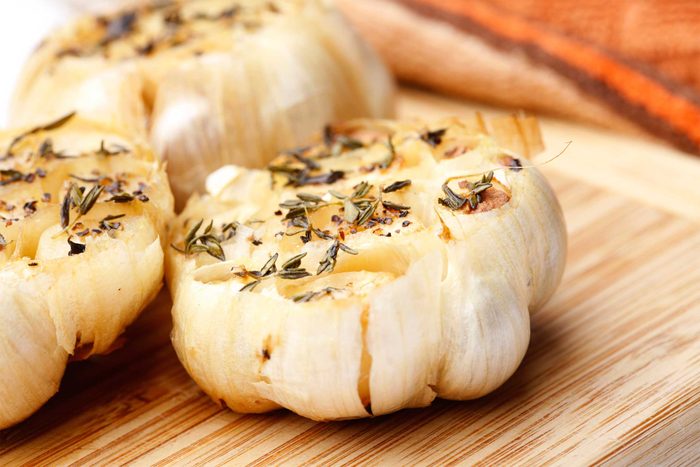
Garlic
This potent aromatic also has anti-inflammatory properties and reduces damage caused by free radicals. A study in the journal Cancer Epidemiology, Biomarkers & Prevention found that people who ate raw garlic were less likely to develop lung cancer than their counterparts who did not consume raw garlic. What’s more, smokers who ate raw garlic had 40 percent lower lung cancer risk compared to smokers who did not eat raw garlic. Still,“it’s not a substitute for stopping smoking,” Dr. Edelman says. “If you smoke, the best thing to do is quit.” Here are 10 more reasons you may have a cough that won’t go away.
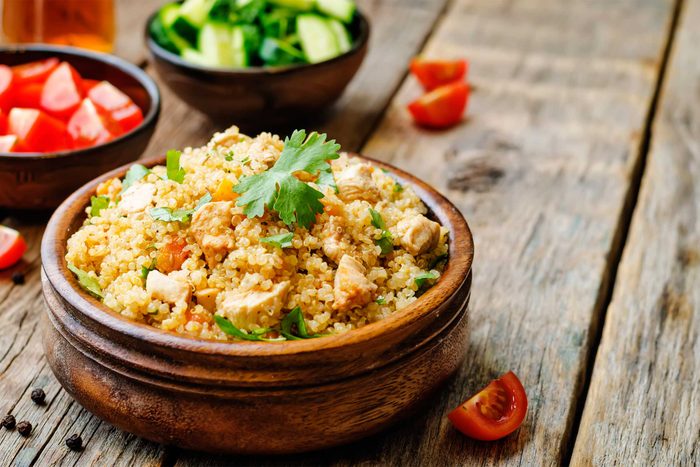
Whole grains
Steer clear of the loaf of white bread and fill your tummy with fibrous whole grains like whole wheat, quinoa, and brown rice. A diet rich in simple carbohydrates like white pasta or muffins may increase your carbon dioxide production and place more stress on your lungs, which can make it harder to breathe, Greene says. Here’s how to eat more whole grains.
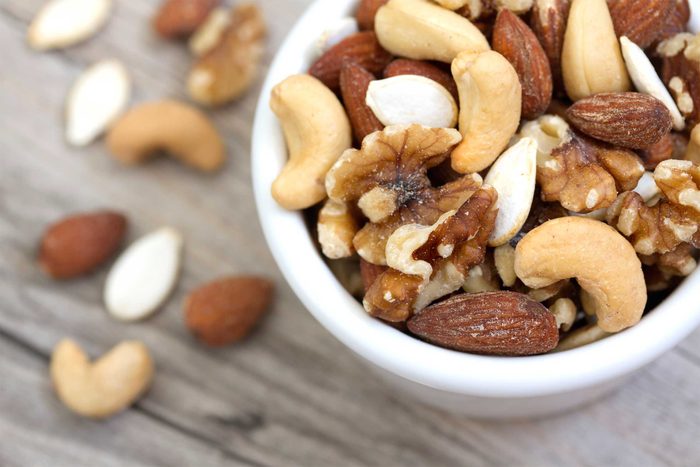
Nuts
Nuts give your body a dose of vitamin E, which helps reduce inflammation, boosts your immune system, and promotes the health of red blood cells, which deliver more oxygen to your body. A stable supply of oxygen prevents the blood vessels in your lungs from constricting and helps you breathe better. “A diet rich in vegetables, fruits, and other plants sources and low in processed foods and sugar can help keep your lungs and the rest of your body in top shape,” says Schiff. Nuts are a healthy post-workout snack; have a handful after doing these lung-power building exercises.
